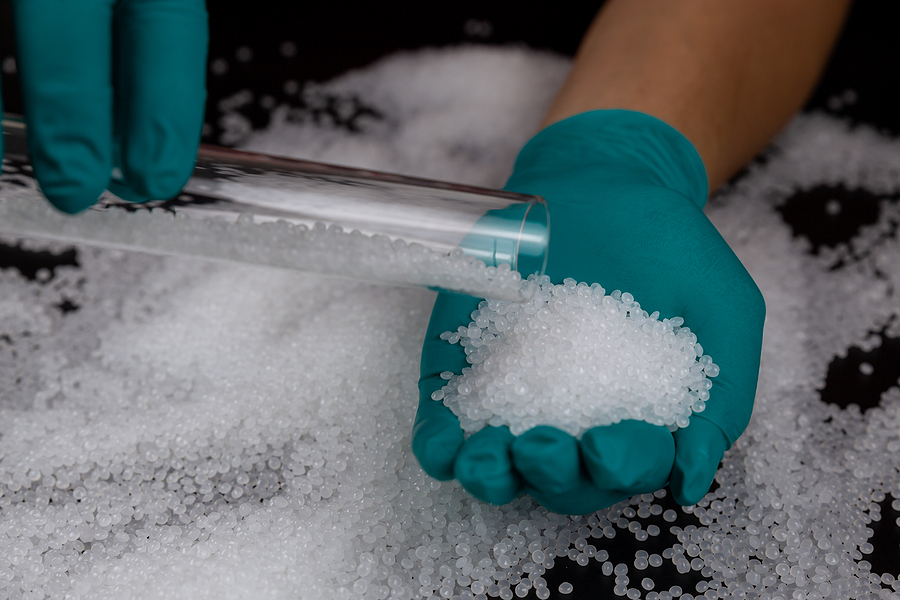Amid a flurry of mixed signals about the U.S. economy and questions about the impact of tariffs, a new report shows that one industry is both outpacing the manufacturing sector and increasing its exports abroad.
Plastics.
Analysis from the American Chemistry Council shows the plastics industry supported $1.1 trillion in economic activity and nearly 5 million jobs last year — even as overall job growth slowed. And investment in new plants and equipment climbed from under $12 billion in 2015 to $17.5 billion last year.
“When you look at the ripple effect on the economy, we make all those innovations that keep our country competitive,” Ross Eisenberg, president of America’s Plastic Makers, told InsideSources.
The virtuous cycle, Eisenberg says, is the massive amounts of affordable natural gas unleashed by the shale boom that his industry turns into plastic products at competitive costs, which then go into U.S.-manufactured finished products across the entire economy.
“The natural gas we’re getting from those shale formations in Ohio, Pennsylvania, and Texas goes into chemicals and plastics manufacturing, giving us a significant competitive advantage over the rest of the world,” Eisenberg says. It’s a major shift from 25 years ago, when the plastics industry’s growth was flat and foreign manufacturers were taking market share.
“Since the shale boom, we’ve been growing by leaps and bounds.”
It’s a conclusion confirmed by a separate report from the Plastics Industry Association. It found that employment in America’s plastics manufacturing industry grew nearly three times faster over the past decade than total manufacturing employment in the United States.
“This year’s report once again confirms the resilience of the U.S. plastics industry. Its economic impact, in some respects outpacing total manufacturing, has remained positive for many years and is unlikely to change in the future,” said the association’s chief economist, Dr. Perc Pineda.
One reason is innovation. New plastic products are being developed that are so durable they can replace some metals. As a result, Eisenberg said, new American cars are, on average, 50 percent plastic.
“Plastics make up 50 percent of the car, but only 10 percent of the weight. That’s how the industry has increased fuel economy. It’s also important for (electric vehicles), which are heavier than gas-powered cars,” according to Eisenberg. “Our products make these cars more lightweight, but without a reduction in safety.”
The benefits of production growth also expanded overseas, with nearly $64 billion in plastics shipped abroad, including a $21.8 billion trade surplus in plastic resins — a major focus of U.S. trade policy. It’s a $3.2 billion increase from 2012, according to ACC statistics.
While the plastics industry is booming, it continues to face criticism from some environmentalists over concerns about plastic waste. More than 500 cities have banned single-use plastic bags in the U.S., and a dozen states have done the same.
Organizations like Greenpeace USA claim that very little plastic is being recycled, and the World Wildlife Fund has called for a ban on single-use plastic cups and cutlery by the end of the year.
Eisenberg said critics are trapped in the past. The industry has changed, and recycling can add to America’s economy and global dominance.
First, “virtually every kind of plastic that is made can be recycled,” Eisenberg said.
Second, more and more plastic products are being designed and manufactured with their “end of life” in mind. That includes the larger and more durable plastic products used in manufacturing.
The key, Eisenberg said, is for America to invest in the new technology that can recycle the world’s plastics, including chemical recycling that “literally takes it back to natural gas, to the chemical elements.”
“We have a number of what are called advanced recycling facilities that are operating around the United States already,” and he sees a future where America is the world leader on recycling technology.
“Plastic waste is a very solvable problem,” he said. “We just have to actually figure out a way to get the technologies to market.”


